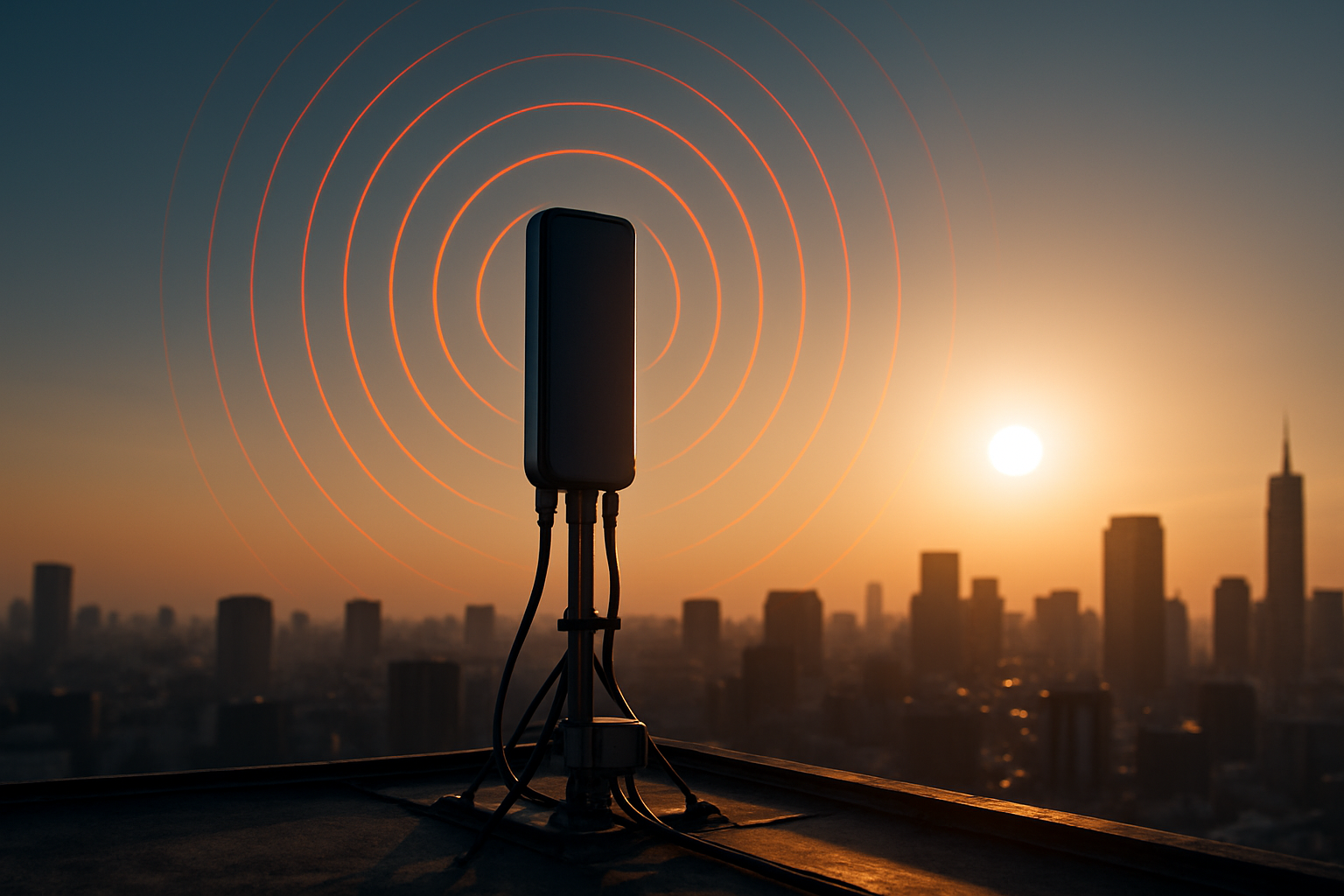Exploring the Potential of Terahertz Waves in Telecommunications
The quest for faster, more efficient wireless communication never stops. As we push the boundaries of existing technologies, researchers are turning their attention to an unexplored frontier: terahertz waves. These high-frequency electromagnetic waves promise to revolutionize telecommunications, offering unprecedented data transmission speeds and opening up new possibilities for wireless connectivity. But what exactly are terahertz waves, and how could they shape the future of our connected world?

Terahertz waves offer several advantages over current wireless communication technologies. They can carry significantly more data than lower-frequency waves, potentially enabling transmission speeds of up to terabits per second. Additionally, terahertz waves have shorter wavelengths, allowing for more precise directional control and reduced interference between neighboring channels.
The Potential Impact on Telecommunications
The integration of terahertz technology into telecommunications systems could lead to a paradigm shift in wireless communication. With data rates potentially reaching hundreds of gigabits per second or even terabits per second, terahertz communication could support ultra-high-definition video streaming, near-instantaneous data transfer, and seamless connectivity for emerging technologies like augmented and virtual reality.
In densely populated urban areas, where spectrum congestion is a growing concern, terahertz communication could provide much-needed relief. The abundance of available bandwidth in the terahertz range could accommodate a vast number of users and devices without compromising on speed or quality of service.
Overcoming Technical Challenges
While the potential of terahertz communication is immense, several technical hurdles need to be addressed before widespread adoption becomes feasible. One of the primary challenges is the high atmospheric absorption of terahertz waves, which limits their transmission range. Water vapor, in particular, strongly absorbs terahertz radiation, making long-distance communication difficult in humid environments.
Researchers are exploring various solutions to mitigate these limitations. One approach involves developing advanced antenna designs and beamforming techniques to concentrate terahertz signals and extend their range. Another promising avenue is the use of artificial intelligence and machine learning algorithms to optimize signal processing and overcome atmospheric effects.
Advancements in Terahertz Hardware
The development of efficient and cost-effective terahertz transmitters and receivers is crucial for the practical implementation of terahertz communication systems. Recent breakthroughs in semiconductor technology have led to significant progress in this area.
Researchers at various institutions have demonstrated terahertz transceivers capable of operating at room temperature, a critical step towards commercial viability. These devices leverage advanced materials and novel circuit designs to generate and detect terahertz waves with unprecedented efficiency.
Moreover, the miniaturization of terahertz components is progressing rapidly, paving the way for compact and portable terahertz communication devices. This miniaturization is essential for integrating terahertz technology into consumer electronics and mobile devices.
Potential Applications Beyond Telecommunications
While telecommunications is a primary focus for terahertz technology, its potential applications extend far beyond wireless communication. The unique properties of terahertz waves make them suitable for a wide range of industries and scientific disciplines.
In the field of security, terahertz imaging could revolutionize non-invasive screening procedures at airports and other high-security locations. Terahertz waves can penetrate many materials that are opaque to visible light, allowing for the detection of concealed objects without the harmful effects of X-rays.
Medical imaging is another area where terahertz technology shows promise. Terahertz waves can provide high-resolution images of soft tissues without the use of ionizing radiation, potentially offering a safer alternative to certain types of medical scans.
In industrial settings, terahertz sensors could enable real-time quality control and process monitoring. The ability of terahertz waves to penetrate packaging materials makes them ideal for inspecting products without damaging or opening containers.
Regulatory and Standardization Efforts
As research into terahertz communication progresses, regulatory bodies and industry stakeholders are working to establish standards and allocate spectrum for terahertz applications. The International Telecommunication Union (ITU) has initiated studies on the use of frequencies above 275 GHz, which includes the terahertz range.
Standardization efforts are crucial for ensuring interoperability between different terahertz communication systems and facilitating global adoption of the technology. Organizations like the IEEE are actively developing standards for terahertz communication, addressing aspects such as channel models, modulation schemes, and network architectures.
The Road Ahead for Terahertz Communication
While terahertz communication technology is still in its early stages, the rapid pace of research and development suggests that commercial applications may not be far off. Industry experts predict that the first practical implementations of terahertz communication systems could emerge within the next decade, initially focusing on short-range, high-bandwidth applications.
As the technology matures, we can expect to see terahertz communication integrated into a wide range of devices and systems, from next-generation smartphones to advanced industrial automation networks. The potential for ultra-high-speed wireless connectivity could transform how we interact with technology and each other, enabling new forms of immersive experiences and real-time collaboration.
However, it’s important to note that terahertz communication is not likely to replace existing wireless technologies entirely. Instead, it will likely complement and enhance current systems, providing an additional layer of high-speed connectivity where needed.
The journey towards harnessing the full potential of terahertz waves in telecommunications is an exciting one, filled with both challenges and opportunities. As researchers continue to push the boundaries of what’s possible, we stand on the brink of a new era in wireless communication, one that promises to redefine our understanding of connectivity and open up new horizons for innovation.





